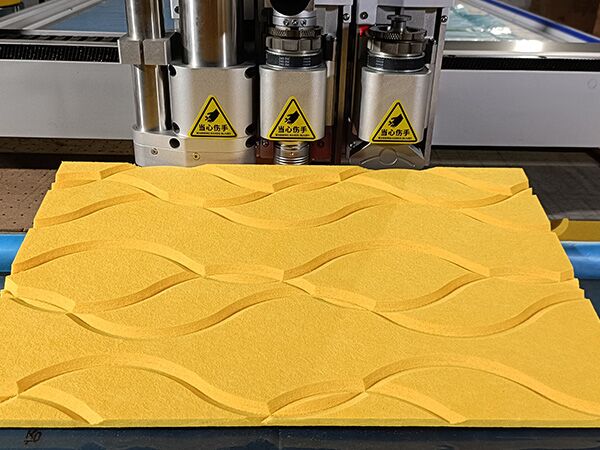
Cities are buzzing, vibrant places full of opportunity, culture, and life. Yet, this constant buzz can often become overwhelming. From the roar of traffic to conversations in crowded cafes, urban noise can significantly impact the well-being of its inhabitants. This is where acoustic technology steps in to create more livable, peaceful environments.
This blog explores why acoustic technology is crucial for urban settings and how it addresses noise pollution, improves architectural design, and enhances our daily lives.
The Growing Problem of Urban Noise
Urbanization and Noise Pollution
With rapid urbanization, the population density of cities is skyrocketing. According to the United Nations, roughly 56% of the world’s population currently live in urban areas, and this figure is expected to rise to 68% by 2050.
This growth exacerbates one significant problem – noise pollution. Continuous exposure to noise levels above 85 decibels can lead to hearing loss, stress, and sleep disturbances, as per the World Health Organization. Add the constant soundscapes of city construction, vehicles, and industrial activities, and the need for better acoustic solutions becomes evident.
Why Noise Pollution is a Silent Health Crisis
Noise pollution doesn’t just affect our ears; it impacts mental health, productivity, and even cardiovascular health. Several studies link prolonged exposure to urban noise with higher risks of heart disease, hypertension, and anxiety. Interrupting sleep cycles because of excessive noise further compounds these issues, making urban areas increasingly stressful for their inhabitants.
How Acoustic Technology Can Transform Cities
Acoustic technology uses modern innovations to control and reduce unwanted sound. Through better urban design and smarter solutions, it has the potential to restore calm to our loud cities.
Better Building Materials for Noise Reduction
One key area of focus is the design and construction of urban buildings. Modern structures now include sound-absorbing materials, like the bevel sound panel, to minimize noise both indoors and outdoors. These panels, known for their sleek design and effective noise absorption, are increasingly used in commercial and residential spaces.
This evolution in materials ensures urban spaces are built to handle noise pollution, giving rise to quieter homes, workspaces, and communal areas.
Acoustic Urban Planning
Beyond individual buildings, citywide urban planning plays a massive role in managing city noise. Acoustic technology helps in designing quieter spaces by analyzing sound propagation and finding ways to minimize sound reflection. For example, placing noise barriers like trees, water features, or soft materials in public spaces can significantly reduce ambient noise while adding aesthetic value.
Take the example of the Copenhagen Soundscape Project. This initiative integrated open park areas with natural sound barriers like tall plants and water trickling from fountains, reducing noise levels in heavily populated zones.
Smart Cities and IoT
Innovative urban centers are now using Internet-of-Things-enabled acoustic sensors to monitor noise levels in real time. These sensors provide city planners with valuable data on the most noise-polluted zones. Data-driven strategies then allow for targeted solutions such as traffic rerouting or specialized insulation for affected neighborhoods.
Acoustic Technology’s Role in Everyday Lives
Acoustic solutions are not just designed for planners and architects; they directly enhance the lives of city dwellers.
Improved Indoor Comfort
The growing trend toward hybrid offices and working from home has made acoustics inside buildings more important than ever. Using technologies such as soundproofing materials, white noise machines, and specialized wall treatments ensures a distraction-free space for families and professionals alike.
Boosting Productivity and Creativity
For workplaces, better sound management leads to higher productivity levels. Imagine working in a co-working space where noise from nearby phone calls or clacking keyboards is eliminated through proper acoustic design. The quiet fosters creativity and focus, making acoustic investments worth every penny.
Acoustic Design Meets Aesthetics
Gone are the days when soundproofing came at the cost of visual appeal. Modern acoustic technologies like sculpted acoustic wall panels, designer ceiling tiles, and engineered flooring offer both functionality and style. Urban designers now have tools that blend seamlessly into their aesthetic ambitions while addressing practical needs.
Acoustic Technology for the Future
Acoustic solutions today are evolving rapidly thanks to AI, machine learning, and adaptive technologies. Predictive algorithms can now simulate how a building or urban area will sound before construction begins. This empowers architects and designers to make precise adjustments to minimize negative noise impact.
Meanwhile, holographic sound technology creates immersive quiet zones in noisy environments, such as airports or public transport hubs. Imagine walking through a bustling train station but hearing nothing but your favorite playlist in your personal sound bubble.
Steps Cities Can Take to Adopt Acoustic Technology
- Upgrade Building Codes: Mandating the use of soundproof materials in new constructions.
- Monitoring Zones for Improvement: Deploy smart acoustic sensors to identify the most problematic areas.
- Encourage Public Spaces for Quiet: Design accessible, peaceful retreats amidst urban chaos.
- Educate Stakeholders: Train city planners, architects, and residents in the importance of sound management.
Addressing noise pollution improves lives in countless ways, from reducing stress and improving sleep to fostering a sense of well-being and focus. By adopting acoustic technology solutions, cities can aim for a healthier, more harmonious future.
Why It’s Time to Prioritize Acoustic Innovation
Urban noise will only grow if left unchecked. By integrating acoustic technology into every aspect of urban life, from building design to traffic management, we can address this pressing issue.
Whether you’re an urban planner, architect, or someone building their dream home, implementing advanced acoustic solutions is key. Modern tools like the bevel sound panel are simple yet powerful options to help tackle urban noise problems.
With continuous innovation, acoustic technology has the potential to redefine how we live, work, and thrive in cities. Together, we can make urban environments more livable for everyone.
